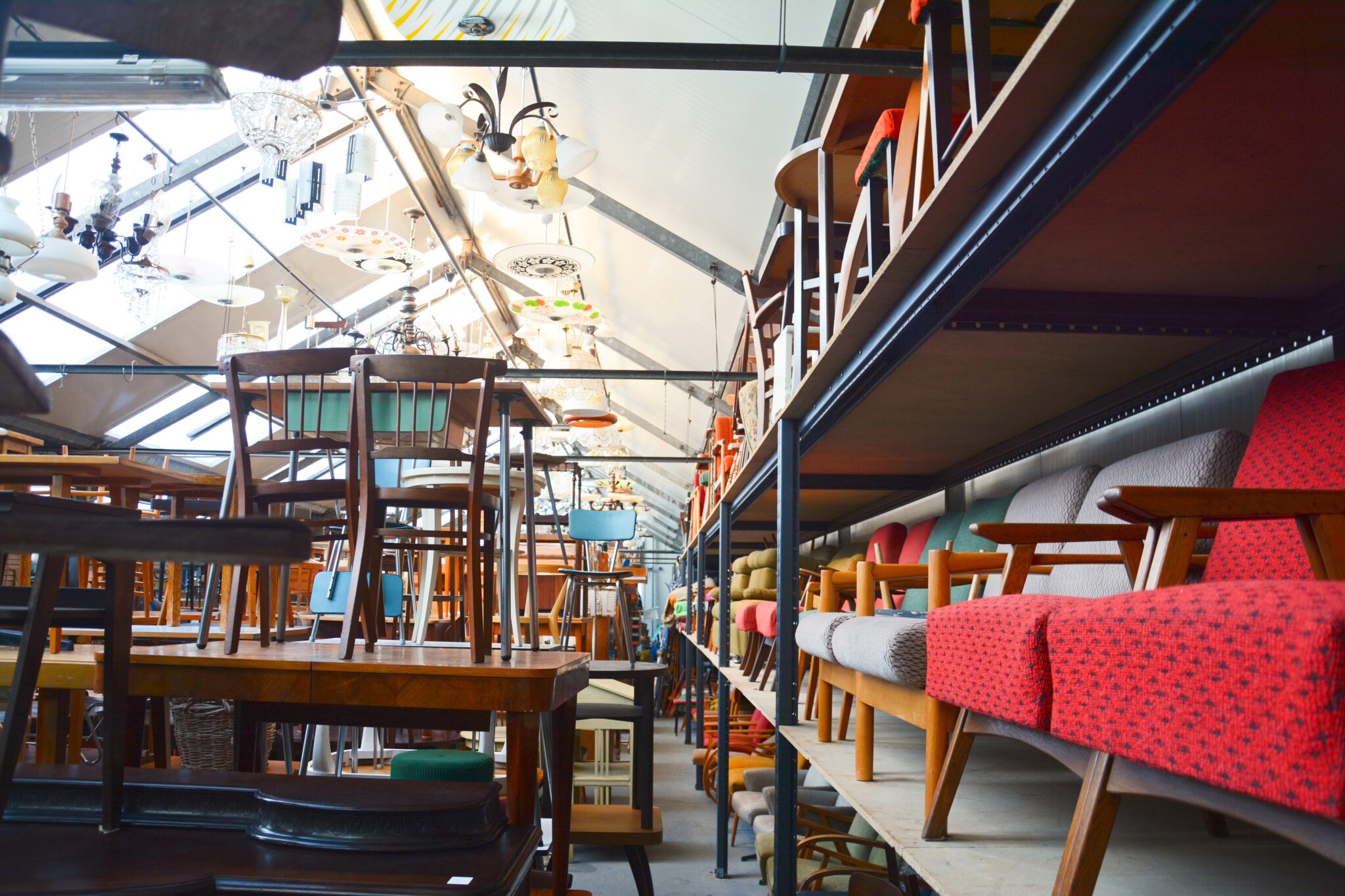
Once prized only by connoisseurs, vintage furniture is now popular with many buyers. They love their retro aesthetic, but also their carbon footprint, which is much more reasonable than that of new furniture.
No one will have missed it: furniture can be harmful to the planet. They are often produced under poor conditions and imported from all over the world. These factors are leading some consumers to rethink the way they choose and buy sideboards, tables, chairs and other elements to decorate their interiors.
Rightly so. At the request of the Auction Technology group, the company Small World Consulting investigated the ecological footprint of second-hand furniture compared to new. It turns out that you significantly reduce your CO2 emissions by choosing antique furniture. Buying a second-hand dining table saves 460 kilos of CO2, according to the study by Small World Consulting, quoted by the trade journal Antique Trade Gazette. This is equivalent to 25 days of gas heating, if we are to believe the My Co2 Converter site.
Choosing a second-hand sofa to furnish your living room saves 563 kilos of Co2. That is no less than 17 smartphones. Also consider the occasion if you want a new cupboard or chest of drawers. This way you reduce your ecological footprint by 782 kilos of Co2. It’s like taking a one-way ticket to Dakar in Senegal.
Contrary to what some may think, antique furniture is more trendy than ever. It is at the heart of the ‘slow deco’ movement, whose mantra is ‘less is more’. The principle ? Demonstrate creativity and sobriety for a clean and healthier interior, both for your mental health and the planet. The idea is to give preference to more ecological furniture, made with natural and sustainable materials such as terracotta, stone or wood.
But do we have to give up new furniture to adopt an eco-friendly lifestyle? Not necessary. Lovers of interior decoration can also opt for furniture labeled “NF Environnement”, the “European Ecolabel” or the “Nordic Ecolabel” to combine ecological commitment and aesthetics. The last option for the most resourceful is to make your own furniture.
ETX Daily Up